20th Century Fashion Epoch Style Guide for Your Theme Party Outfit

There is no such designer who would never quote his predecessors. To shift the well-forgotten old in a new way is a favorite technique of Jeremy Scott, Karl Lagerfeld, and Nicolas Ghesquière.
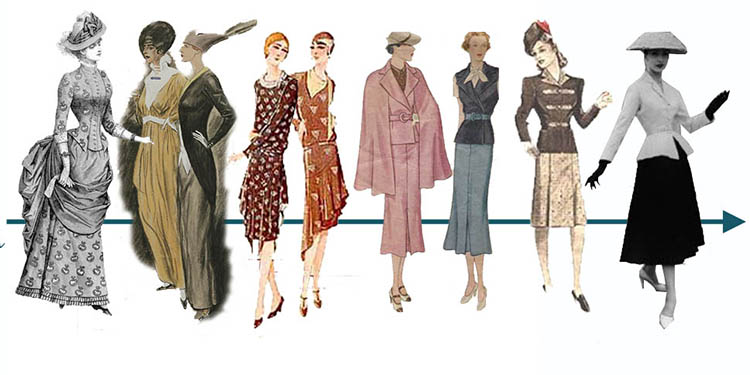
To guess the allusions of the couturier at a glance at the silhouette and cut, it is worth understanding the history of fashion of the last century.
As a fashion stylist, my mission is to help you find the right look for every occasion.
So for your upcoming theme party, I’m here to guide you through a comprehensive style guide of some of the 20th century’s most iconic fashion trends — from extravagance and freedom of the roaring ’20s to minimalism and excesses of the 90s.
Let’s dive into the fun world of vintage fashion and pick the perfect outfit to make a statement at your party.
Guide to Fashion Epochs of the 20th Century.
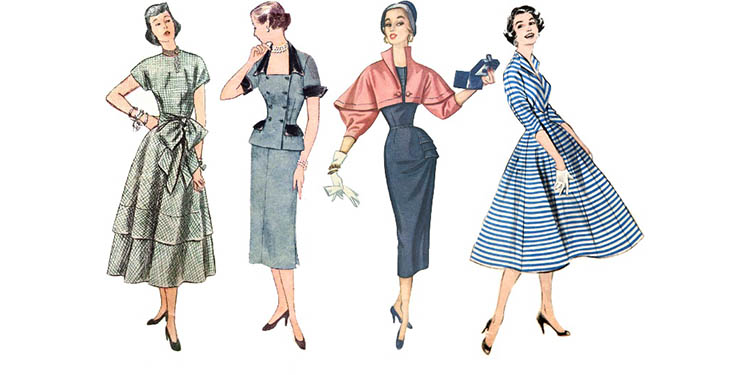
If you want to make a real impression, choosing an outfit that looks great and has a deeper meaning is essential. To pick the right look for your theme party, here’s a guide to the most iconic fashion trends of the 20th century.
The 1910s: Art Deco
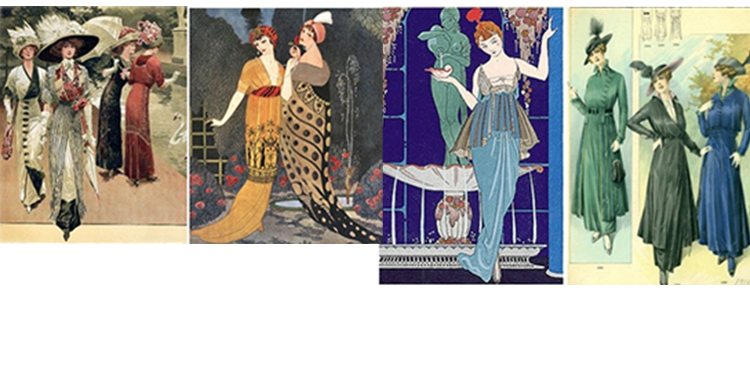
In the 1910s, Art Deco replaced Belle Epoque with a characteristic hourglass silhouette. The new canon of beauty was the natural, unrestricted female body forms. Europe dressed up in exotic outfits inspired by the ballet Scheherazade, presented by Diaghilev as part of the Russian Seasons in Paris.
At that time, Paul Poiret - a fashion reformer - freed women from corsets and bustles, offering loose tunic dresses in the ancient Greek style and capes and harem pants inspired by the East. Poiret introduced exoticism and orientalism into fashion, cultivating luxury and abundance in clothes. Expensive fabrics and many decors are signs of his creations.
If you’re going to an Art Deco party, wear a high-waisted dress, a tapered skirt, culottes, bloomers, a kimono cape, a sari dress, a turban, or a pouch bag.
The 1920s: Retro and Jazz
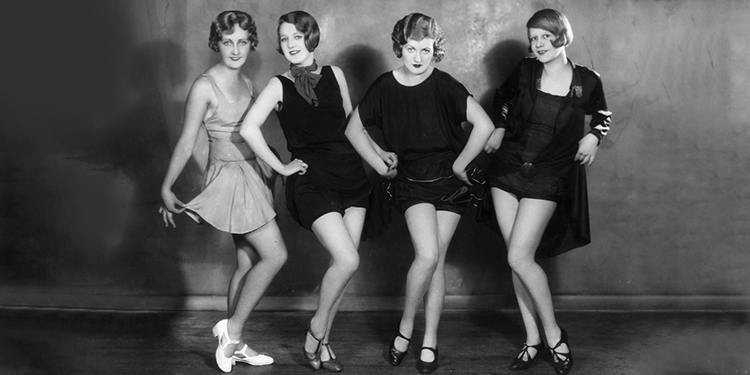
In the 1920s, an emancipated woman drives a car, writes novels, smokes, and famously dances the Charleston in a comfortable straight dress with a low waist - a symbol of the era. The understated elegance of Coco Chanel sits side by side with the frills of the Jazz Age, such as feathers, boas, and fringes.
Coco Chanel dressed women in men’s clothes and proved that a little black dress, complemented by a string of pearls, is an evening option no worse than a beaded outfit. Jeanne Lanvin was responsible for a more feminine fashion direction.
For a 1920s-inspired outfit, look for a top hat, jacket, cardigan, loose canvas trousers, beach pajama suit, cloche hat, and headbands with lavish decorations.
The 1930s: Cold Hollywood Sensitivity
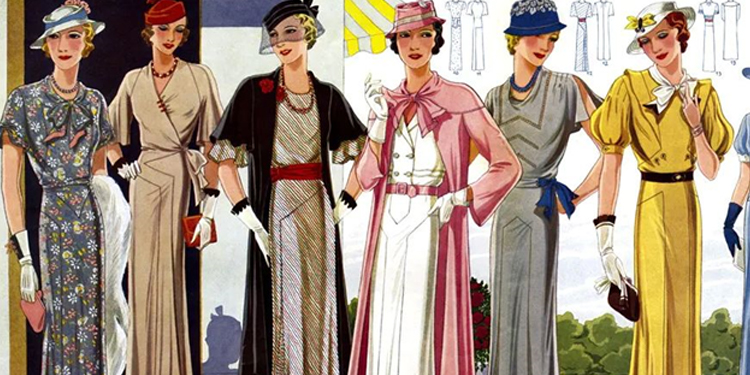
The new decade resolutely refused the androgynous dress style, which hides sensual curves. Instead, fashion designers proclaimed a different silhouette - an accentuated waist from which a long flowing skirt extends.
Following the athletes, the girls begin to wear knitwear. The luxurious decor of the past decade is forgotten - the Great Depression and the feeling of an imminent war set completely different moods.
At that time, Elsa Schiaparelli invented a sweater dress and a printed jumper using viscose and the zipper for the first time. She was the first fashion provocateur and surrealist. What was worth her dress with lobster and parsley or a hat in the form of a shoe?
For a 1930s look, opt for a floor-length dress with an accentuated waistline, a sweater dress, a jumper, tennis pleated skirts, polo dresses, sweatpants, elbow-length silk gloves, and trains.
The 1940s: Wartime and New Fashion Orders

The war began, and the girls were forced to abandon luxurious complex outfits. Instead, military-style clothing appeared - women’s items were sewn from the same fabrics as the military uniform.
While fashion in Europe was shackled by the restrictions of the Second World War, the United States created its own haute couture.
The main “trendsetter” of the decade was the shortage of fabrics, buttons, and decorative elements.
The deficit determined the innovations in women’s wardrobe: it shortened the length of the skirt, prohibited lush frills due to the large consumption of fabric, and stockings and hairpins. As a result, girls had to wear hats and headscarves to hide their untidy hair.
For a 1940s look, buy a fitted off-the-shoulder jacket, a double-breasted coat, a pencil skirt, a blouse with puffed sleeves, a shirt dress with an emphasis on the waist, a nautical dress, a hat with a veil, a belt, brooches, beads.
The 1950s: Rise of Parisian Fashion
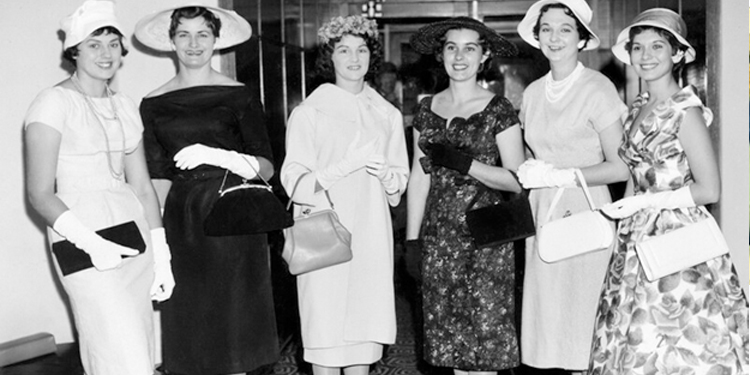
In the 1950s, Paris regained the title of the fashion capital, and the new image of a woman, proposed by Christian Dior, gained popularity. During the war years, everyone was too tired of hardship! So girls strived to look as feminine as possible and spent a lot of time and money on toilets.
Christian Dior generously spent meters of fabric on one puffy high-waisted skirt and once again tightened women into corsets. Cristobal Balenciaga took a different path and preferred a straight silhouette and architectural experiments with it to Dior’s “buds” and “hourglass.”
Coco Chanel returned to the world of fashion and presented a tweed jacket with a skirt. At the same time, Hubert Givenchy created elegant, aristocratic outfits for his muse Audrey Hepburn.
For a 1950s outfit, look for a floor-length bustier dress, pleated flared skirt, short narrow-waisted jacket, three-quarter-sleeve A-line coat, gloves, petite hat, clutch bag, pointy-toe pumps, pearls, and necklaces.
The 1960s: Riot and Sexual Revolution
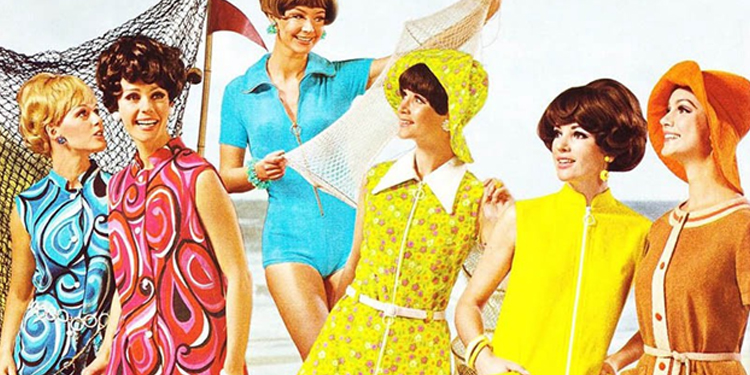
Freedom of morals was a fashionable anthem of the 1960s! At that time, a mini skirt, jeans, a trouser suit, an A-line dress, and an A-line coat appeared in the women’s wardrobe. Fashion designers, following contemporary artists, were experimenting with might and main and created clothes from vinyl and synthetic materials.
English designer Mary Quant was the first to give the world a miniskirt. André Courrège and Yves Saint Laurent almost simultaneously presented a short A-line dress, which became an absolute hit. In addition to haute couture, couturiers were starting to create pret-a-porter collections.
Therefore, for a 1960s-style party, feel free to wear a miniskirt, high-waisted trousers, jeans, a-line dress, crew-neck coat, peasant-style shirt, sundress, knee-high boots, long strap bag, and wide-brimmed hats.
The 1970s: Denim Boom and Unisex Clothing
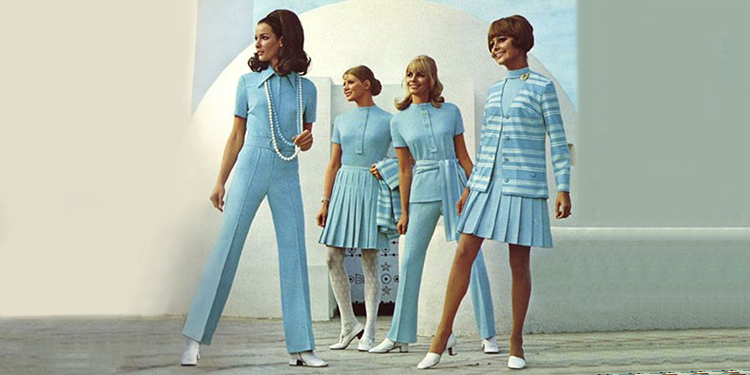
The denim boom swept the world in the 1970s; following the growing hippie movement, couturiers turned to folklore and ethnicity. In addition, at that time, the unisex style was gaining ground, and men and women were dressed in the same simple, comfortable clothes.
Yves Saint Laurent gave fashion a women’s tuxedo, sheer blouse, safari style, abstract prints, African motifs, and much more.
“Japanese in Paris” Kenzo Takada acted as an apologist for Asian sensuality and street style. Sonia Rykiel made the fine jersey sweater dress her calling card, and Oscar de la Renta opened a personal brand in New York.
For a 1970s-style party, wear turtlenecks, shirts, jeans, bell bottoms, sundresses, knitted sweaters, cardigans, hats, ponchos, canvas bags, baubles, and jumpsuits.
The 1980s: The Rise of Feminism

The businesswoman was the new ideal of the 1980s. Designers came up with a whole wardrobe of an independent and successful woman. And then they went further, presenting provocatively sexy outfits that proved what power the so-called weaker sex had over men.
Karl Lagerfeld became the creative director of Chanel in 1983 and launched the House’s first ready-to-wear line.
In addition, Japanese designers Yohji Yamamoto and Rei Kawakubo declared themselves with a completely new trend in fashion - deconstructivism, which transformed and broke the usual silhouettes of clothes.
The image of a woman in the style of the 1980s should include classic trousers with pleats, jackets and tuxedos with patched shoulders, sheath dresses, dresses and sweaters with batwing sleeves, leather jackets and raincoats, leggings, bustier tops, mini and midi in leather, platform shoes or over the knee boots.
The 1990s: Minimalism vs. Street Style

In the 1990s, the fashion world was divided into two camps. The first defended the principles of minimalism, which entered the industry with the Jil Sander collection. The second one enthusiastically followed the crazy experiments of Alexander McQueen and Jean-Paul Gaultier and supported their couture frenzy.
The mass market was distributed all over the world. As a result, sports styles, grunge, and punk were becoming relevant for young people worldwide.
Marc Jacobs showcased a grunge collection at Fashion Week on behalf of Perry Ellis. John Galliano shocked critics with his theatrical shows. Finally, Calvin Klein brought androgyny back into fashion.
For a party in the style of the 90s, boldly wear T-shirts, pullovers, denim jackets, low-waisted jeans, denim skirts, spaghetti straps, hoodies, sweatshirts, sneakers, and sneakers, or rough boots. Don’t forget about accessories - knitted caps, scarves, and bright jewelry.
With this guide to fashion for each decade, you’ll be sure to look great at any 1960s, ’70s, ’80s, or ’90s-themed party. So have fun with this unique look and express yourself.
Bottom Line
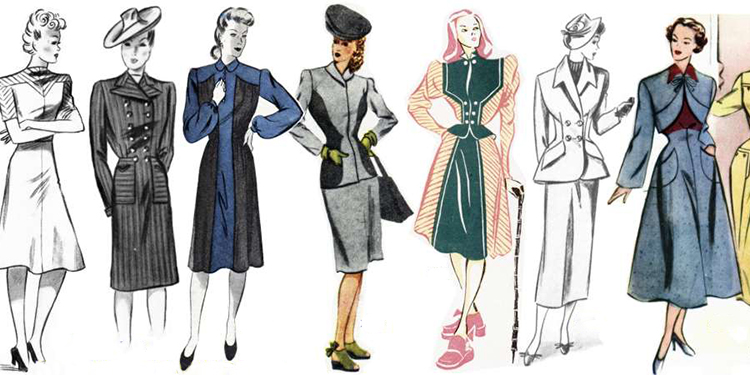
No matter what decade of fashion you’re looking to capture, there is something for everyone. From turtlenecks and jeans from the ’70s to tuxedos and grunge from the ’90s, you can use fashion to express yourself and make a statement.
With so many options, it’s easy to find something that suits your style and makes you stand out in any crowd. So don’t be afraid to experiment and be creative with your fashion choices - you never know what amazing results you might come up with!


Leave a Comment